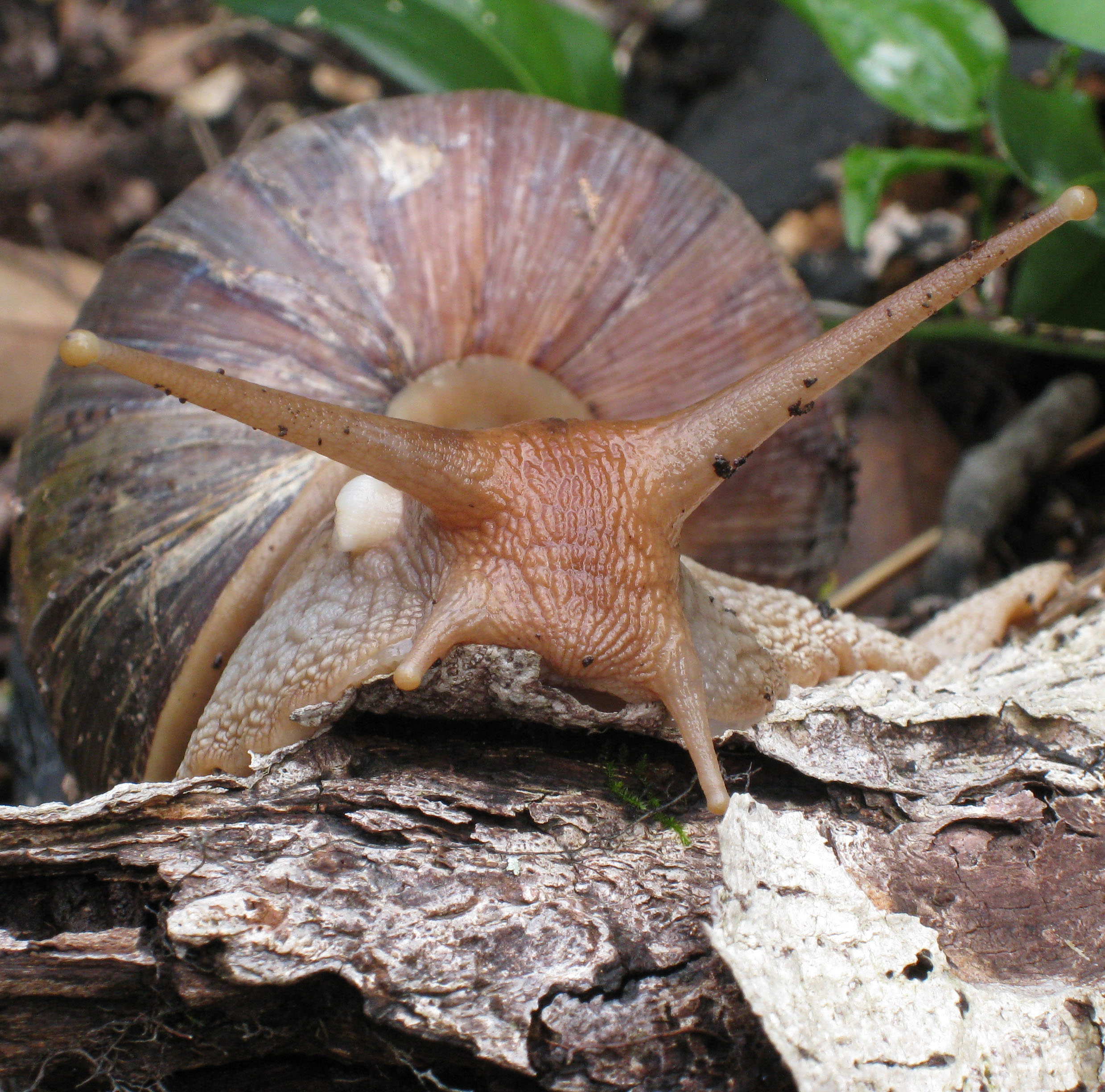Achatine
Achatina fulica
The Giant African Snail (Achatina fulica) is a large snail which in the adult state usually measures about 8 to 10 cm long. It is a sub-variety of the Achatina species, whose largest specimens, Achatina Achatina, can exceed 20 cm for a weight rising up to 1500g. The phylogenetic nomenclature places around thirty species in the Achatina genus, fulica being the smallest species.Its brown shell with darker transverse marks is conical in shape and its height is twice its width.
This snail is a polypaghous herbivore. This means that it is not very demanding in terms of the vegetals it consumes. It can breed 6 to 7 times a year with 200 eggs laid each time (with a 90% survival rate). It reaches the adult state in 6 months time and generally lives a year and a half in its natural environment.
Native to Africa, this species has been widely introduced in Asia, in the Carribean, in the Pacific and in the Indian Ocean islands where its reproductive rate and its large size have turnt it into a major problem, a situation worsen by the absence of natural predators. In addition to the great damage an uncontrolled population can cause to crops, Achatina fulica also poses serious threats to the public health since it is a vector of parasites and pathogens, some of which can affect humans. However this only concerns wild specimens withdrawn from the wild and not those born in captivity that have never been in contact with a wild specimen.
Among the measures implemented to control the Giant African Snail populations, biological control – through the introduction of predatory snail species (such as Euglandina rosea) or flatworms – has proved to be relatively ineffective and has sometimes resulted into dramatic consequences on native snail populations such as the Partula.
It represents a crucial hazard to certain endemic plant species such as the Bois d’Ortie – especially the juvenile ones.




 Français
Français In Progress
In Progress